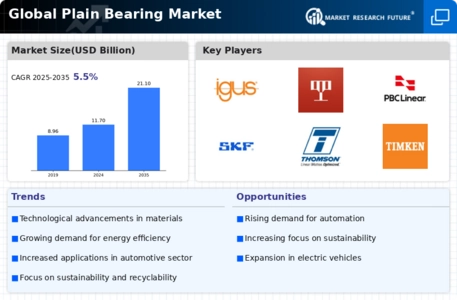Market Share
Plain Bearing Market Share Analysis
Companies use various market share positioning methods to obtain a competitive edge and enhance their presence in the dynamic Plain Bearing Market. One popular strategy is differentiation, when corporations offer distinctive and creative features in simple bearing products. This strategy tries to differentiate the company from competitors by offering clients advantages like greater durability, friction reduction, or performance under certain conditions. Companies emphasize these differentiators to create a niche and build client loyalty.
Cost leadership is another significant strategy. By gaining economies of scale, enterprises may offer plain bearing products at competitive rates, attracting more customers. This strategy works well in price-sensitive economies where affordability influences buying decisions. Cost leadership requires companies to optimize operations, invest in technology, and negotiate favorable supplier contracts to stay ahead of competitors.
Companies also split the market to personalize their plain bearing goods to various customer categories. Companies can tailor items to specific client groups by assessing market demands and preferences. This practice personalizes client service, increasing happiness and loyalty. A manufacturer may develop durable and reliable plain bearings for industrial machines and a distinct product line for automotive applications that emphasizes efficiency and noise reduction.
Collaboration and strategic alliances are crucial to Plain Bearing Market share positioning. Companies may partner with suppliers, distributors, or other manufacturers to utilize complementary capabilities and resources. Joint R&D, market expansion, and competitiveness can result from such cooperation. Industry partnerships allow organizations to enter new markets, share expertise, and overcome problems, boosting growth and resilience.
In addition, Plain Bearing Market market share positioning depends on continual innovation. Research and development are needed to keep up with technology and client needs. Companies may attract clients, maintain their industry leadership, and adjust to changing market dynamics by continually delivering new and improved plain bearing solutions. Innovation boosts consumer loyalty and helps companies adapt to new trends like the desire for eco-friendly bearings.










Leave a Comment